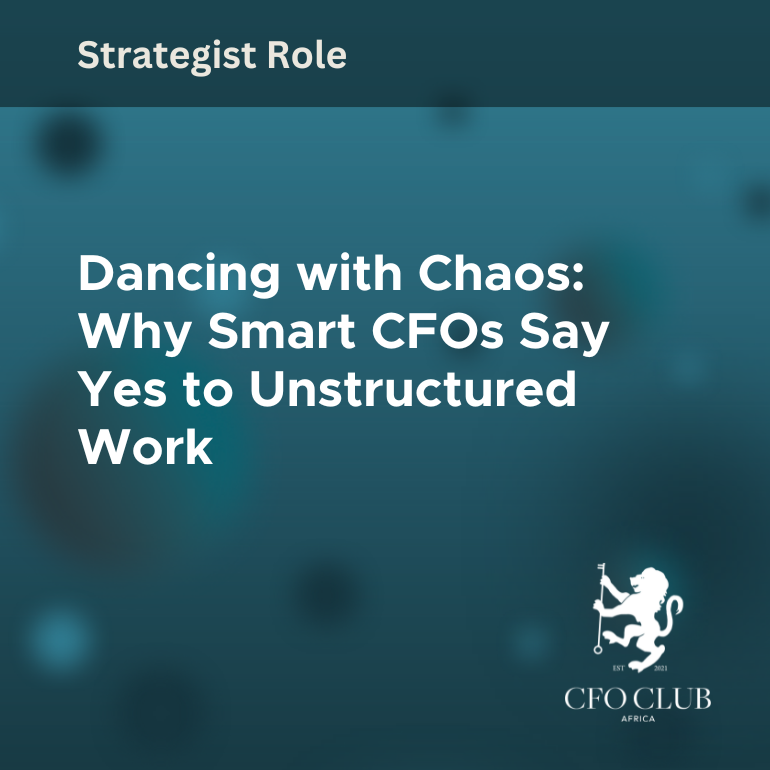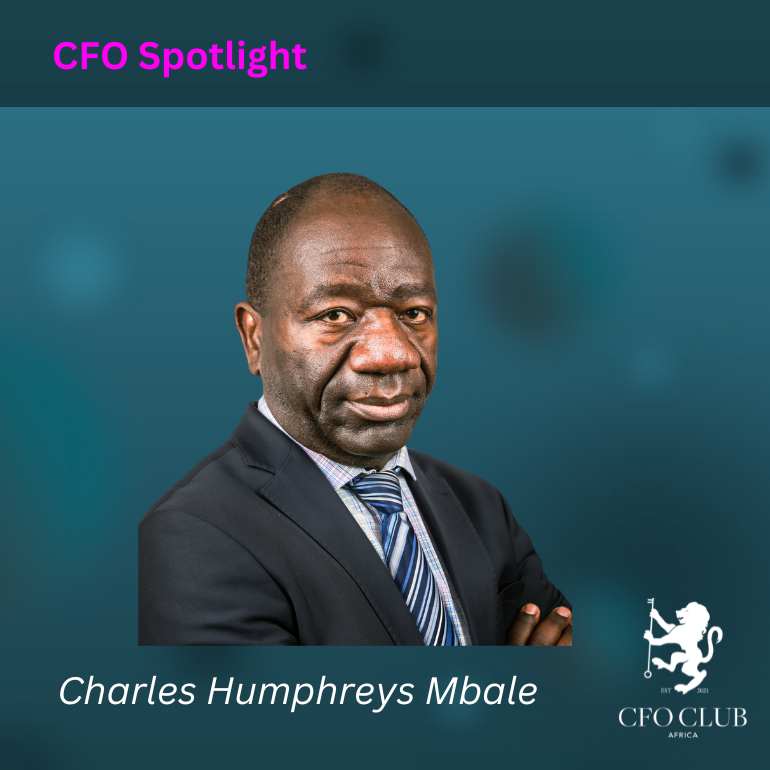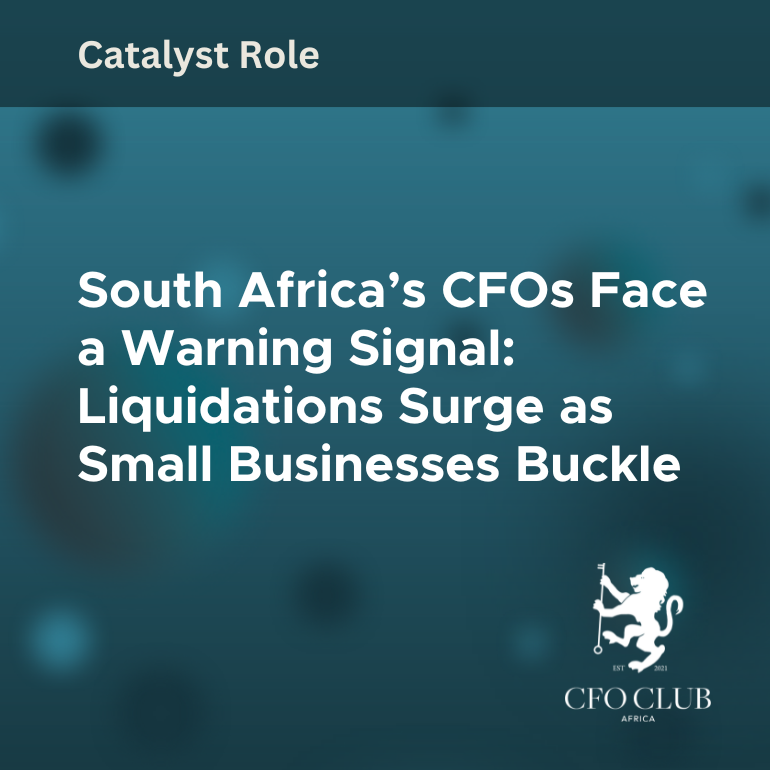Dancing with Chaos: Why Smart CFOs Say Yes to Unstructured Work
Dancing with Chaos: Why Smart CFOs Say Yes to Unstructured Work
For many years, the role of the Chief Financial Officer was defined by order, certainty, and structure. It was about budgets, forecasts, monthly closes, and audits. Everything had its place. Everything had a process. But something has shifted. In today’s world, the most impactful CFOs are those who are stepping beyond the boundaries of what used to be considered their domain. They are embracing projects that are not neatly labelled or clearly scoped. They are stepping into ambiguity. They are saying yes to unstructured work.
And it is changing everything.
What is Unstructured Work?
Unstructured work refers to tasks or projects that don’t have clear beginnings, defined steps, or obvious outcomes. These are not the kind of tasks that come with pre-built templates or well-worn procedures. Instead, unstructured work is messy. It’s fluid. It often involves working with people outside the finance function, on issues that may not appear, at first glance, to be financial at all.
Examples include helping to launch a new product, advising on a talent retention strategy, integrating a newly acquired business, exploring how to report on environmental and social metrics, or co-leading a digital transformation initiative. These projects might not have been considered part of the CFO’s job ten years ago, but today, they are increasingly part of the landscape.
Why CFOs are Being Pulled Into the Grey
There are three powerful forces behind this shift.
First, the digital transformation of business is demanding a more integrated view of operations, technology, and financial outcomes. CFOs are being asked to help assess and prioritise investments, model scenarios, and guide change—even in areas that sit outside traditional finance.
Second, organisations are becoming more cross-functional. Executives are no longer working in silos. Finance is expected to collaborate with HR, IT, operations, and marketing to drive strategy and execution. That collaboration means stepping into projects that don’t live on a spreadsheet.
And third, external pressures, from evolving regulations and economic volatility to sustainability and stakeholder expectations, are bringing complexity that structured systems alone cannot solve. These are not problems with fixed solutions. They require exploration, experimentation, and judgement.
Why CFOs Are Uniquely Suited to This Work
At first glance, it might seem that unstructured work would be a poor fit for the typical CFO. After all, finance professionals are known for their love of order, rules, and precision. But that’s a narrow view. The truth is, many CFOs are naturally equipped to thrive in these ambiguous environments.
They have a knack for asking the right questions and framing decisions clearly. They can take broad, complex issues and break them down into manageable parts. They can assess risks and identify what matters most. And perhaps most importantly, they bring a discipline and clarity to discussions that can otherwise spiral into opinion and guesswork.
This ability to bring structure to the unstructured, without killing creativity or momentum, is a powerful advantage. It allows CFOs to step into unfamiliar territory and create value, even when the destination is not yet fully visible.
The Danger of Saying No
Saying no to unstructured work may feel safe, especially when the core responsibilities of finance are already demanding. But consistently saying no carries a risk. It can position finance as a back-office function, reactive rather than strategic. It can cause other executives to sidestep the CFO when they’re thinking about innovation, growth, or transformation.
Over time, this can erode the influence of the CFO and limit opportunities for the finance team to evolve. It can reduce the role to one of reporting and compliance, rather than strategy and leadership.
On the other hand, saying yes—selectively and thoughtfully—can dramatically expand the scope and impact of the CFO. It opens doors to new conversations, brings financial thinking into the heart of decision-making, and helps build a culture where finance is seen as a partner, not a gatekeeper.
Saying Yes with Intention
Of course, saying yes doesn’t mean agreeing to every loose idea or vague request. It’s about knowing which opportunities are worth pursuing and approaching them with purpose.
When invited into a new or uncertain project, a good starting point is to clarify the intended outcome. What is the problem we’re trying to solve? What does success look like? Even if the path is unclear, a shared goal helps everyone move forward together.
From there, it helps to apply some light structure. Break the challenge down into parts. Identify what information is missing. Set some early milestones. Find ways to measure progress, even if it’s initially qualitative. This doesn’t mean turning every project into a finance exercise. It means using the strengths of finance, clarity, rigour and discipline to support momentum rather than stall it.
And perhaps most importantly, make sure the core responsibilities of finance remain protected. Leading unstructured work should not come at the cost of financial reporting, compliance, or risk management. It’s not about working more, but working smarter, building a team that can handle both routine and ambiguity with confidence.
Around the world, CFOs are already leading initiatives that, not long ago, would have been considered outside their lane. They’re helping to shape sustainability strategies, co-leading digital transformation efforts, building financial models for new service lines, overseeing data governance programmes, and working alongside HR to rethink workforce planning.
These are not side projects. They are key parts of the business’s future. And they rely on the CFO’s ability to navigate uncertainty with calm and clarity.
Embracing the Grey
We are in a moment of transition. Businesses are becoming more fluid, more collaborative, and more complex. There is no longer a single blueprint for success. And that means roles are evolving too.
For CFOs, the opportunity is clear. The more comfortable you become in the grey areas—those undefined, unstructured, often chaotic spaces—the more valuable you become to your organisation. Not because you have all the answers, but because you know how to help others find them.
So the next time you’re asked to join a project that seems outside your scope, pause before saying no. There might not be a playbook. The timeline might be loose. The team might be unsure. But that’s exactly where leadership begins.
The future isn’t perfectly balanced. But then again, neither is transformation. And CFOs who learn to dance with the unknown are the ones who will shape what comes next.





